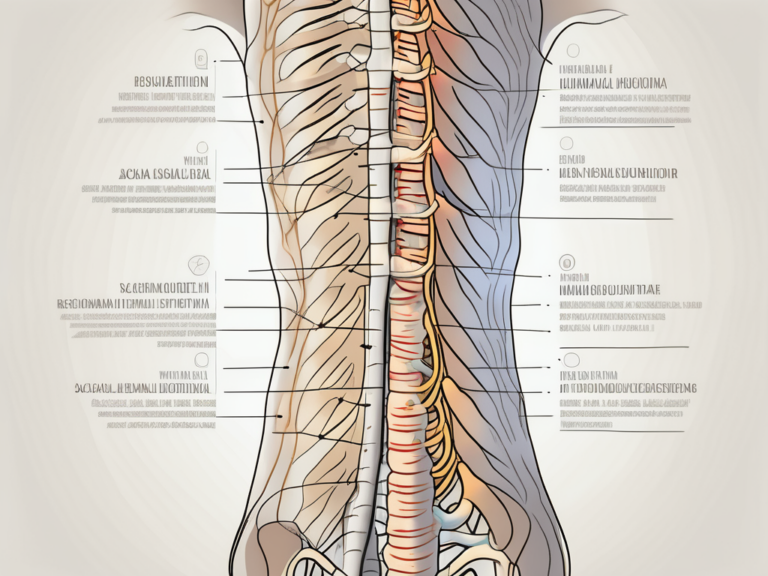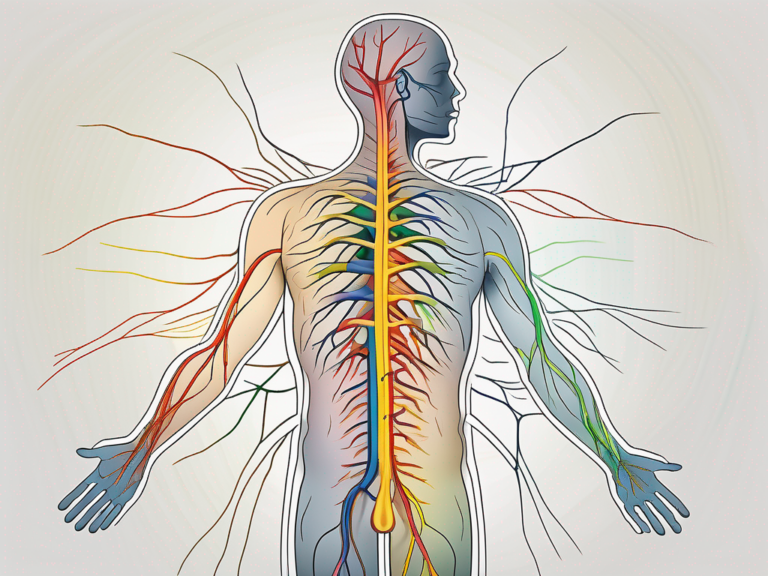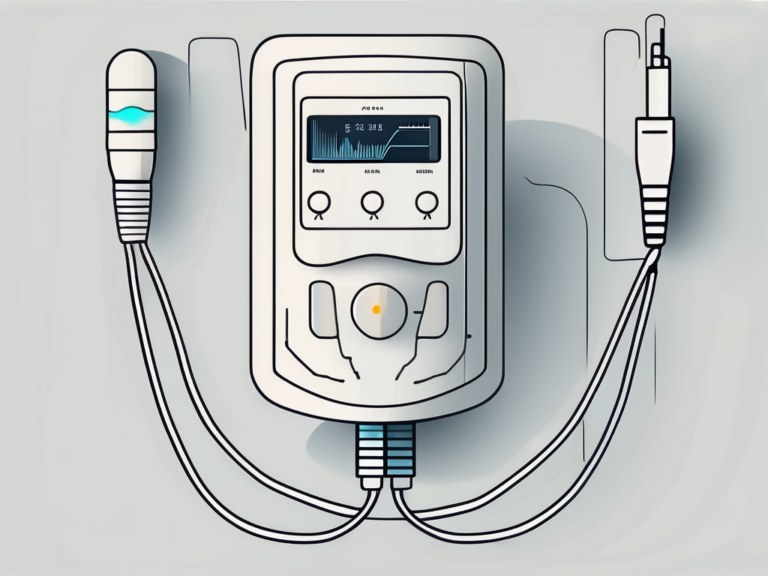How Long Does Sacral Nerve Stimulation Take to Work?
Sacral Nerve Stimulation (SNS) is a medical procedure that involves implanting a small device to provide electrical stimulation to the sacral nerves. This treatment has proven to be effective in managing certain bladder and bowel control disorders, such as overactive bladder and fecal incontinence.
Understanding Sacral Nerve Stimulation
Sacral Nerve Stimulation, also known as sacral neuromodulation, is a groundbreaking medical procedure that has revolutionized the treatment of bladder and bowel control disorders. This innovative technique works by modulating the signals between the brain, spinal cord, and the nerves that control bladder and bowel function. By providing electrical stimulation to the sacral nerves, the device can help regulate and improve the communication between these vital parts of the body.
The Science Behind Sacral Nerve Stimulation
The sacral nerves, located at the base of the spine, play a crucial role in bladder and bowel control. These nerves are responsible for transmitting signals between the brain, spinal cord, and the pelvic organs, ensuring smooth and coordinated function. However, when these nerves are not functioning properly, it can lead to a range of issues, including urinary and fecal incontinence.
During Sacral Nerve Stimulation, a small device is surgically implanted near the sacral nerves. This device, often referred to as a neurostimulator, delivers mild electrical impulses to the nerves, helping to regulate their activity. By stimulating the sacral nerves, the device can effectively manage bladder and bowel control problems, restoring a sense of normalcy and improving the quality of life for individuals suffering from these conditions.
The Medical Uses of Sacral Nerve Stimulation
Sacral Nerve Stimulation has proven to be a game-changer in the field of urology and gastroenterology. It is primarily used to treat bladder control disorders, such as overactive bladder and urinary incontinence. These conditions can significantly impact a person’s daily life, causing embarrassment, discomfort, and a loss of confidence. Sacral Nerve Stimulation offers a ray of hope for those who have struggled with traditional treatment methods.
Furthermore, Sacral Nerve Stimulation can also be beneficial for individuals with bowel control issues, including fecal incontinence. This distressing condition can lead to social isolation and a diminished quality of life. However, with the help of sacral neuromodulation, patients can regain control over their bodily functions and experience a renewed sense of freedom and confidence.
It is important to note that Sacral Nerve Stimulation is not suitable for everyone. It is typically recommended for individuals who have not responded well to other forms of treatment or medication. Before considering this treatment, it is essential to consult with a healthcare professional who specializes in bladder and bowel disorders. They will be able to assess your specific condition and determine if Sacral Nerve Stimulation is the right option for you.
In conclusion, Sacral Nerve Stimulation is a remarkable medical advancement that has transformed the lives of countless individuals suffering from bladder and bowel control disorders. By providing targeted electrical stimulation to the sacral nerves, this procedure offers hope, relief, and improved quality of life. If you or a loved one is struggling with these conditions, don’t hesitate to explore the possibilities of Sacral Nerve Stimulation and consult with a knowledgeable healthcare professional.
The Procedure of Sacral Nerve Stimulation
The Sacral Nerve Stimulation procedure is a minimally invasive treatment option for individuals suffering from conditions such as urinary or fecal incontinence, pelvic pain, or overactive bladder. This innovative procedure aims to restore normal nerve function and improve quality of life. Let’s delve deeper into the steps involved in this procedure.
Preparing for the Procedure
Prior to the Sacral Nerve Stimulation procedure, your healthcare provider will conduct a thorough evaluation to determine if this treatment is appropriate for you. This may include physical examinations, medical history review, and diagnostic tests. It is essential to provide your healthcare provider with accurate information about your medical conditions, allergies, or medications you are taking. This will help them tailor the procedure to your specific needs.
Once you have been deemed a suitable candidate for Sacral Nerve Stimulation, your healthcare provider will provide you with detailed instructions on how to prepare for the procedure. This may involve medication adjustments, dietary restrictions, or specific pre-operative protocols. Following these instructions diligently will help ensure a smooth and successful procedure.
What Happens During the Procedure?
On the day of the procedure, you will be admitted to the hospital or outpatient facility. The procedure is typically performed under anesthesia to ensure your comfort throughout the process. Once you are comfortably sedated, your surgeon will begin the implantation process.
The first step involves making a small incision in the lower back or buttock area. This incision allows the surgeon access to the sacral nerves, which play a crucial role in controlling bladder, bowel, and pelvic functions. The surgeon will then carefully guide the leads of the device to the targeted sacral nerves.
Precision is of utmost importance during this step to ensure accurate placement of the leads. The surgeon will use advanced imaging techniques, such as fluoroscopy or ultrasound, to assist in guiding the leads to the desired location. Once the leads are in position, they will be secured in place to prevent movement or displacement.
With the leads successfully placed, the surgeon will proceed to connect them to the device. This device, typically implanted under the skin, is responsible for delivering electrical stimulation to the sacral nerves. The device can be programmed to deliver customized stimulation patterns based on your specific condition and symptoms.
After the procedure, you will be given time to recover from the anesthesia in a designated recovery area. Your healthcare provider will closely monitor your vital signs and ensure your comfort. They will provide you with detailed post-operative instructions, including how to care for the incision site, manage any discomfort, and gradually resume your normal activities.
Follow-up appointments will be scheduled to assess the effectiveness of the Sacral Nerve Stimulation and make any necessary adjustments to the device settings. These appointments are crucial for optimizing the treatment outcomes and ensuring your long-term satisfaction with the procedure.
In conclusion, the Sacral Nerve Stimulation procedure is a sophisticated and effective treatment option for individuals experiencing various pelvic conditions. By understanding the steps involved in this procedure, you can make informed decisions about your healthcare and embark on a journey towards improved quality of life.
The Recovery Period After Sacral Nerve Stimulation
After the Sacral Nerve Stimulation procedure, there is a recovery period during which your body needs time to adjust to the device. It is important to follow your healthcare provider’s instructions for optimal healing and successful treatment outcomes.
During the recovery period, your body will undergo various physiological changes as it adapts to the presence of the Sacral Nerve Stimulation device. The device works by delivering electrical impulses to the sacral nerves, which can help regulate bladder and bowel function. As your body adjusts to this new form of stimulation, you may experience a range of sensations, including tingling, warmth, or a slight pulsating feeling in the affected area.
Immediate Post-Procedure Expectations
Following the procedure, you may experience some mild discomfort, swelling, or bruising around the incision site. This is normal and can be managed with over-the-counter pain relievers and cold compresses. It is important to keep the incision site clean and dry to prevent infection and promote proper healing.
Your healthcare provider may advise you to avoid certain activities, such as heavy lifting, for a short period to allow proper healing. It is essential to follow these recommendations to minimize the risk of complications. Additionally, you may be prescribed antibiotics to prevent infection or given specific instructions on how to care for the incision site.
During the immediate post-procedure period, it is crucial to listen to your body and rest as needed. Engaging in light activities, such as gentle walking, can help promote blood circulation and aid in the healing process. However, it is important to avoid strenuous activities or exercise until cleared by your healthcare provider.
Long-Term Recovery and Maintenance
In the weeks and months following the Sacral Nerve Stimulation procedure, you will have several follow-up appointments with your healthcare provider. These visits are crucial for monitoring your progress and making any necessary adjustments to the device settings.
Your healthcare provider will work with you to establish a maintenance plan tailored to your specific needs. Regular check-ups and device programming reviews will be essential to ensure ongoing effectiveness and address any concerns that may arise. During these appointments, your healthcare provider may perform tests to evaluate the functioning of the device and make any necessary modifications to optimize its performance.
It is important to communicate openly with your healthcare provider during the recovery and maintenance period. They are there to support you and address any questions or concerns you may have. By working closely with your healthcare team, you can maximize the benefits of Sacral Nerve Stimulation and improve your quality of life.
Factors Influencing the Effectiveness of Sacral Nerve Stimulation
While Sacral Nerve Stimulation has shown to be effective for many individuals, certain factors can influence its success.
Individual Health Conditions
Each person’s medical history and overall health can impact the outcome of Sacral Nerve Stimulation. Factors such as obesity, diabetes, and prior surgeries may affect the results. It is crucial to discuss your medical history with your healthcare provider to determine if this treatment is appropriate for you.
Obesity, for example, can pose challenges during the Sacral Nerve Stimulation procedure. The excess weight may make it harder for the surgeon to access the sacral nerves accurately. Additionally, obesity can increase the risk of complications during and after the surgery, such as infection or delayed wound healing.
Diabetes, on the other hand, can affect the overall success of Sacral Nerve Stimulation due to its impact on nerve function. High blood sugar levels can impair nerve conduction, potentially diminishing the effectiveness of the treatment. It is important for individuals with diabetes to closely monitor their blood sugar levels and work with their healthcare team to optimize their diabetes management before undergoing Sacral Nerve Stimulation.
Prior surgeries can also play a role in the effectiveness of Sacral Nerve Stimulation. Scar tissue from previous procedures may make it more challenging for the surgeon to place the electrodes accurately, potentially affecting the stimulation’s efficacy. It is crucial to inform your surgeon about any prior surgeries you have had to ensure they can account for these factors during the procedure.
The Skill and Experience of the Surgeon
The success of the Sacral Nerve Stimulation procedure also depends on the skill and experience of the surgeon performing it. It is essential to choose a surgeon who specializes in this treatment and has a track record of successful outcomes.
A skilled surgeon will have a deep understanding of the anatomy and physiology of the sacral nerves, allowing them to accurately place the electrodes in the optimal location. They will also be familiar with the latest techniques and advancements in Sacral Nerve Stimulation, ensuring that you receive the most effective treatment possible.
Experience plays a significant role in the success of any surgical procedure, and Sacral Nerve Stimulation is no exception. Surgeons who have performed numerous Sacral Nerve Stimulation procedures are likely to have encountered a wide range of anatomical variations and challenges, allowing them to adapt and overcome any obstacles that may arise during the surgery.
When considering Sacral Nerve Stimulation, it is crucial to research and select a surgeon who not only has the necessary qualifications but also possesses extensive experience in performing this specific procedure. Consulting with multiple surgeons and asking for patient testimonials can help you make an informed decision and increase the likelihood of a successful outcome.
Frequently Asked Questions About Sacral Nerve Stimulation
As a treatment for bladder and bowel control disorders, Sacral Nerve Stimulation may raise some common questions. Here are a few frequently asked questions and their answers:
Is the Procedure Painful?
During the Sacral Nerve Stimulation procedure, you will be under anesthesia, ensuring that you do not feel any pain. The anesthesia will be administered by a trained anesthesiologist who will monitor you throughout the procedure to ensure your comfort and safety. Once the anesthesia takes effect, you will be in a state of deep relaxation, and the surgical team will perform the necessary steps to implant the device.
After the procedure, some mild discomfort around the incision site is normal but can typically be managed with over-the-counter pain relievers. Your healthcare provider will provide you with specific instructions on how to manage any post-procedure discomfort and will be available to address any concerns or questions you may have.
Are There Any Side Effects or Risks?
As with any medical procedure, Sacral Nerve Stimulation carries some risks. These can include infection, bleeding, discomfort, or device-related problems. However, it is important to note that the overall risk is generally low, and complications are rare.
Prior to the procedure, your healthcare provider will thoroughly evaluate your medical history and perform any necessary tests to ensure that you are a suitable candidate for Sacral Nerve Stimulation. They will discuss the potential risks and benefits with you, taking into consideration your specific condition and individual circumstances. It is essential to have an open and honest conversation with your healthcare provider to address any concerns or questions you may have.
Infection is a potential risk associated with any surgical procedure. However, the risk of infection with Sacral Nerve Stimulation is relatively low. The surgical team will take all necessary precautions to minimize the risk of infection, including adhering to strict sterile techniques and prescribing appropriate antibiotics when necessary.
Bleeding is another potential risk, but it is typically minimal. The surgical team will carefully control any bleeding during the procedure, and you may experience some minor bruising or swelling around the incision site afterward. This is normal and should subside within a few days.
Discomfort or pain at the implant site is also possible, but it is usually temporary and can be managed with over-the-counter pain relievers. If you experience persistent or severe pain, it is important to contact your healthcare provider for further evaluation.
Device-related problems, such as lead migration or device malfunction, are rare but can occur. Your healthcare provider will closely monitor your progress and provide you with instructions on how to properly care for and maintain the implanted device. Regular follow-up appointments will be scheduled to ensure that the device is functioning optimally and to address any concerns that may arise.
It is important to remember that while there are risks associated with Sacral Nerve Stimulation, the potential benefits can significantly improve your quality of life. Your healthcare provider will work closely with you to determine if this treatment option is suitable for your specific condition and individual needs.
Conclusion: What to Expect from Sacral Nerve Stimulation
Sacral Nerve Stimulation is a safe and effective treatment option for individuals suffering from bladder and bowel control disorders. While the timeline for results can vary from person to person, many individuals experience improvements in their symptoms within a few weeks of the procedure.However, it is important to note that Sacral Nerve Stimulation may not be suitable for everyone. Consulting with a healthcare professional who specializes in bladder and bowel disorders is crucial to determine if this treatment is appropriate for your specific needs. Their expertise and experience will guide you through the process, ensuring the best possible outcome for your condition.




